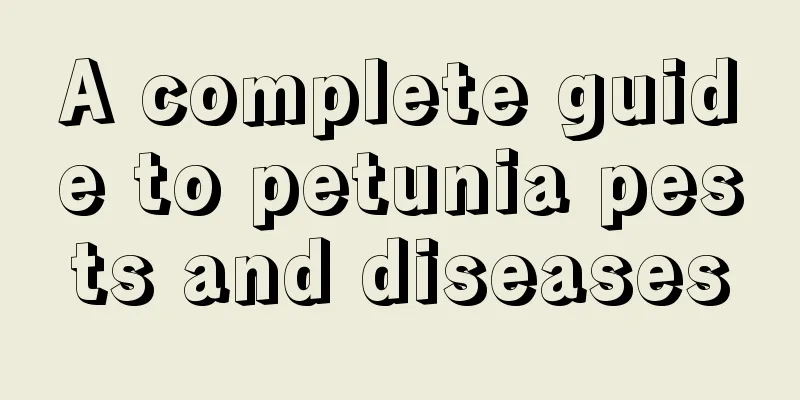A complete guide to petunia pests and diseases

White rustWhite rust is most harmful to the leaves, petioles and tender stems of petunias. The infected leaves will initially develop small light green spots, which will then slowly turn into light yellow. As the disease progresses, they will turn into large spots. In the later stage, there will be white scar-like protrusions on the back of the infected parts of the leaves. The affected tender stems will cause the flowers and stems to grow distorted. When the spots spread and surround the petioles and tender shoots, they will cause abnormal growth of the host part above the ring section until it shrinks and dies. WorkaroundAt the early stage of infection, spray 1% Bordeaux mixture or 500 times 50% Phytophthora net solution. The prevention and control effect will be better if spraying once every 10 to 15 days. White moldWhite mold causes the most serious damage to leaves. The initial infection of the pathogen appears as patches of white spots, which worsen in the later stages and cause the infected leaves to fall off. WorkaroundAfter the initial signs of infection appear, remove the diseased leaves as soon as possible and spray them with 600-800 times diluted 75% thiophanate-methyl. Leaf spotLeaf spot disease mainly harms the leaves of petunias, and in severe cases it can also lead to the death of the entire plant. WorkaroundRemove diseased leaves promptly and burn them, and remove surrounding fallen leaves as soon as possible; spray 1000 times diluted 50% concentration of mancozeb. Viral diseasesIf the petunia plant shows signs of slow growth and weak rhizomes, it is very likely infected with a viral disease, and in severe cases the leaves may turn yellow. WorkaroundSpray a 1000 times solution of 40% concentration of omethoate. aphidAphids are the most common and main insect pest of petunia, which can cause serious damage to the leaves and tender stems of petunia. WorkaroundWhen a large number of aphids appear, isolation measures should be taken and spray with 1000 times diluted 10% oxydemeton-methyl emulsion, 1000 times diluted dichlorvos emulsion, 1000-1500 times diluted malathion emulsion, or 15000-20000 times diluted imidacloprid (70% concentration) water dispersible granules. ConclusionI believe that after understanding these common diseases and pests that threaten the health of petunias, flower lovers can keep their petunias very healthy and let this beauty accompany them for a long time. |
<<: Why are there woodlice in the house? How to completely eliminate them?
>>: Butterfly flower disease and insect pest control methods
Recommend
How to prune Japanese crabapple
When to prune Japanese crabapple Japanese crabapp...
How to deal with grape hyacinth after it blooms? Do you need to pill it after it blooms?
Grape hyacinth post-flowering treatment 1. Do not...
Can potassium dihydrogen phosphate make leaves green (can spraying potassium dihydrogen phosphate cure yellow leaves)
Can potassium dihydrogen phosphate cure yellow le...
How to increase the yield of peanut planting (teaching you seven tips for increasing peanut production and management)
Peanuts, like other crops, have their own growth ...
Characteristics of Sakura
1. Appearance characteristics Cherry blossoms gro...
How to manage leeks in winter?
Chives are grown in all parts of China. As the te...
How to care for peony flowers
Soil requirements The requirements for peony pott...
Cultivation method of Hovenia dulcis
1. Maintenance methods 1. Temperature: Hovenia du...
How to grow sunflowers
1. Maintenance methods 1. Lighting: As its name s...
Cultivation methods and precautions of Wannian hemp
1. Lighting It generally prefers sunny places, so...
What are the cultivation methods and precautions of plum blossoms?
Plum Blossom Introduction Plum blossom is a small...
Can Amaryllis be watered with vinegar? How to water with vinegar
Can I use vinegar to water Amaryllis? Generally, ...
What trees are suitable for planting in the desert? What trees are suitable for planting in the desert?
Trees planted in the desert cannot be planted ran...
The correct maintenance method of red
After the impatiens blooms, the flowers are very ...
How to grow Osmanthus fragrans at home
Murraya Osmanthus Growth Conditions Osmanthus fra...









